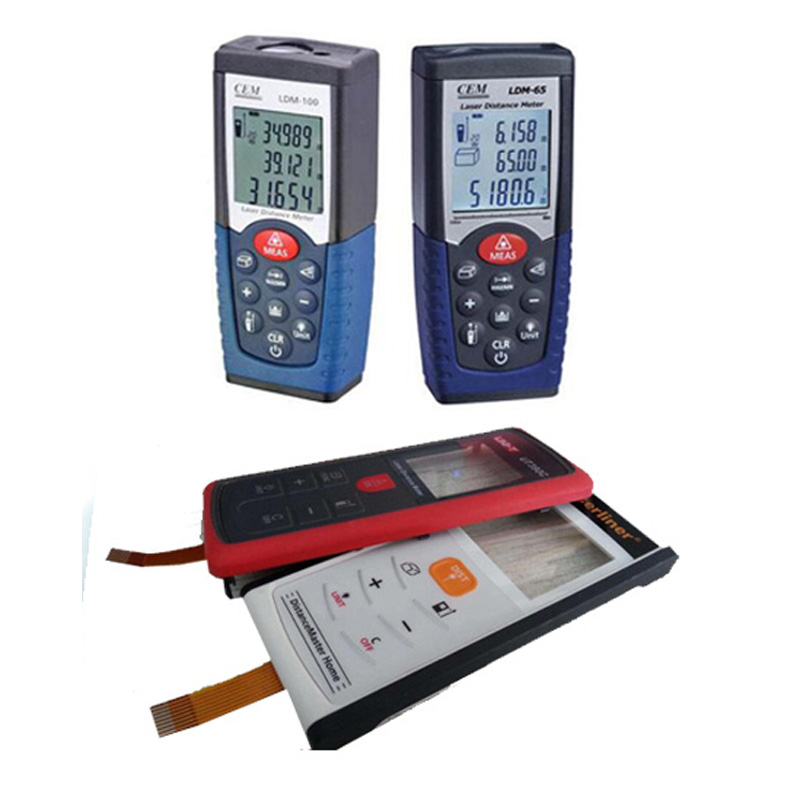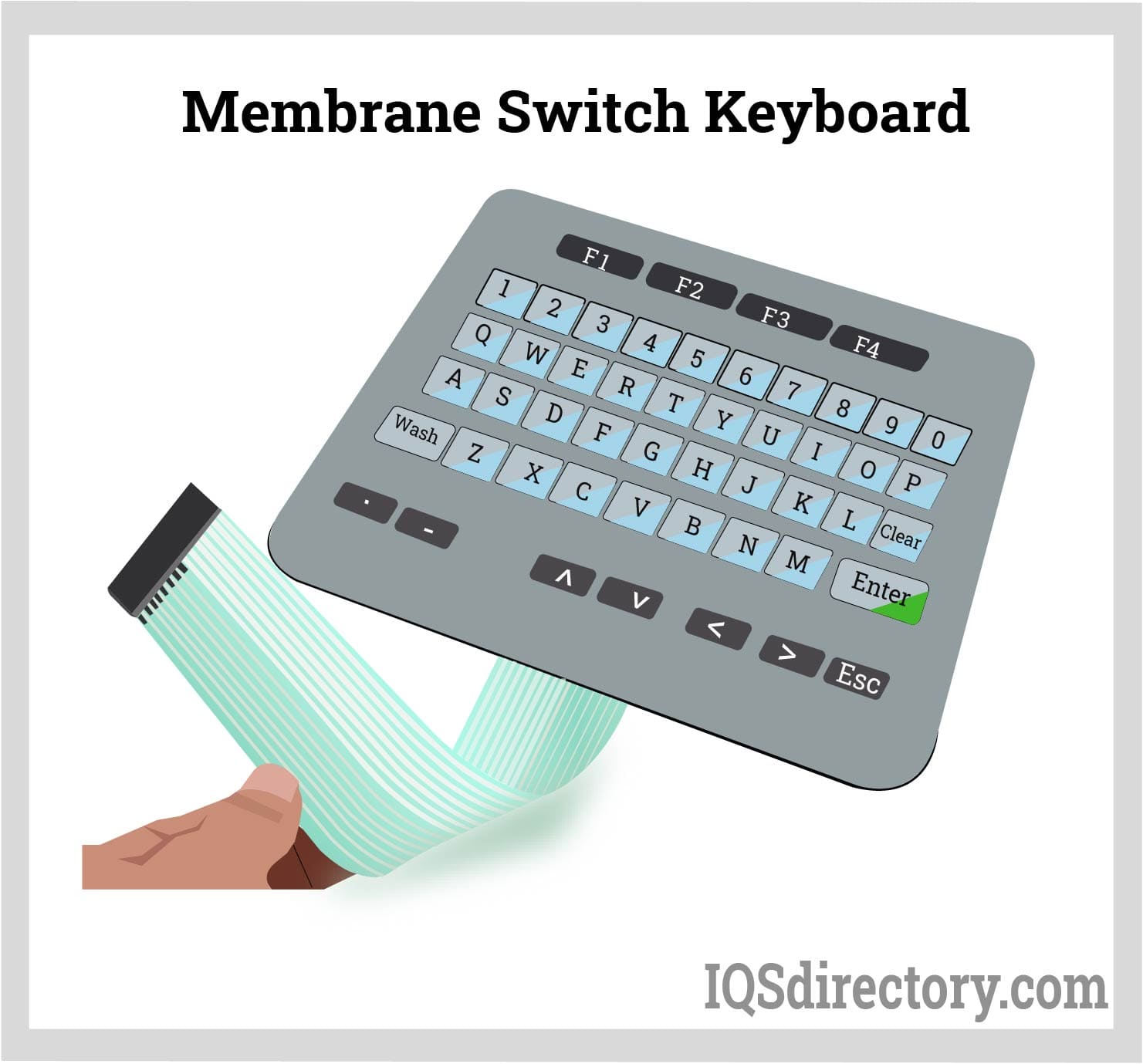Top reasons to use membrane switch in contemporary devices
Everything About Membrane layer Switch: A Comprehensive Overview for Beginners
Membrane buttons are necessary elements in modern electronics, using a special interface for user interaction - membrane switch. Their layered building and construction, including overlays and conductive traces, gives performance and toughness. Unlike typical mechanical switches, membrane layer switches provide a streamlined design and personalized choices. Recognizing their vital features and advantages can transform product design. The ins and outs of their application and design considerations call for further expedition.
What Is a Membrane layer Switch?
A membrane button is a kind of electric button that contains a versatile membrane layer layered over a printed motherboard. This style permits for a small and sleek interface, commonly made use of in various digital tools. Membrane layer switches are generally located in consumer appliances, clinical devices, and industrial machinery as a result of their resilience and resistance to ecological factors.The construction typically consists of several layers, such as visuals overlays and glue backing, which offer tactile comments and secure the circuitry beneath. The procedure of a membrane layer button is launched when stress is related to the surface, completing an electric circuit.These buttons are valued for their flexibility, allowing personalized designs and printed graphics that accommodate certain interface. Their low-profile nature reduces area demands, making them optimal for applications where standard switches may not fit. Generally, membrane switches provide a aesthetic and useful option for modern digital gadgets.
Secret Parts of Membrane Layer Switches
Membrane switches make up a number of essential parts that contribute to their performance and performance. The top layer, recognized as the overlay, provides the customer interface and is often printed with icons or graphics. Under the overlay lies a spacer layer, which divides the conductive elements and prevents unintended activation. The next important element is the visuals layer, which boosts aesthetic appeals and ensures the durability of the design.Conductive traces, commonly made from products like silver or carbon, are printed on the circuit layer. When pressure is related to the overlay, these traces come right into contact, finishing the circuit. Additionally, a support layer uses structural support and can be made from materials such as polyester or polycarbonate. Together, these components produce a dependable, straightforward interface ideal for numerous applications, from house appliances to commercial equipment. Understanding these aspects is crucial for anybody curious about membrane button technology.
Just How Membrane Layer Switches Over Work
Understanding how membrane layer switches over function is important for appreciating their prevalent usage in various gadgets. A membrane button runs with a collection of layers, consisting of a graphic overlay, spacer, and a circuit layer. When pressure is put on the overlay, it presses the spacer layer, enabling the circuit layer to make get in touch with and finish an electric circuit. This action sends out a signal to the tool, triggering a feedback, such as switching on a light or activating a function.Membrane changes can be made with numerous features, consisting of tactile responses, backlighting, and custom graphics, improving individual interaction. Their building permits a covered layout, safeguarding the interior elements from dirt, dampness, and pollutants. This longevity makes them suitable for varied applications, from customer electronics to industrial equipment. Generally, the simpleness and effectiveness of membrane switches over add to their popularity in modern-day technology.
Advantages of Membrane Layer Changes Over Mechanical Buttons
While mechanical switches have actually long been a staple in lots of gadgets, membrane layer switches over offer unique benefits that make them progressively appealing. One substantial benefit is their slim profile, permitting more portable styles and greater adaptability in item development. In addition, membrane layer switches over feature an uniform surface area, which enhances visual appeal and streamlines cleaning, making them suitable for settings where hygiene is critical.Another benefit is their resistance to dirt and dampness. Unlike mechanical buttons, which can be compromised by ecological elements, membrane layer buttons provide a covered interface that shields against pollutants - membrane switch. Additionally, membrane switches usually have a longer life-span because of fewer relocating parts, causing boosted sturdiness and reliability.Cost-effectiveness is also a notable benefit, as membrane switches can be created in bulk with lower manufacturing prices. These variables combine to place membrane switches as a sensible option to typical mechanical choices in numerous applications
Typical Applications of Membrane Layer Switches Over
Membrane switches are commonly used in various markets, specifically in consumer electronics and commercial control board. In consumer devices, they provide a sleek, user-friendly interface, while in industrial setups, they boost durability and performance. Understanding these applications highlights the flexibility and functionality of membrane buttons in modern-day innovation.
Consumer Electronics Instruments
As consumer electronic devices remain to advance, membrane buttons have actually ended up being a prominent option for a selection of tools as a result of their adaptability and streamlined style. These switches are generally located in mobile phones, tablets, and remote controls, where area is minimal and appearances matter. Their low account and adjustable styles enable makers to develop easy to use user interfaces that boost the total customer experience. In addition, membrane layer buttons are usually made use of in appliances such as microwaves and coffee machine, supplying user-friendly control alternatives while standing up to dampness and dirt. The durability and integrity of membrane layer switches make them suitable for daily customer items, making certain longevity and consistent efficiency. In general, their assimilation in customer electronics mirrors a blend of functionality and contemporary layout.
Industrial Control Panels
The applications of membrane switches expand past home customer electronics, locating significant usage in commercial control board. These switches are favored for their sturdiness and resistance to harsh atmospheres, making them ideal for manufacturing and procedure control setups. They provide a trustworthy user interface for drivers to control machinery, screen procedures, and adjust setups. Membrane switches can be customized to fit details operational demands, incorporating features like backlighting and tactile comments, enhancing individual experience. Their low-profile style allows for integration right into various tools, while their capacity to stand up to spills, dirt, and extreme temperature levels warranties longevity. Overall, membrane switches add to reliable and secure operation in commercial applications, demonstrating their adaptability and efficiency in requiring environments.
Considerations for Designing Membrane Switches
When creating membrane buttons, choosing the best materials is important to assure resilience and performance. Furthermore, comprehending layer configuration techniques can considerably affect the button's performance and customer experience. These factors to consider play a vital duty in creating reliable and effective membrane layer switch designs.
Material Selection Significance
Material option plays a vital function in the style and performance of membrane layer switches. The selected products directly influence the button's toughness, tactile action, and total visual. Secret factors to consider include the substrate, which should give architectural stability while permitting for flexibility, and the graphic overlay, which requires to be immune to put on and environmental variables. Conductive products must read what he said assure dependable electric performance, while adhesives have to use solid bonding without compromising the switch's procedure. Furthermore, compatibility with producing procedures and end-user settings is essential; materials should withstand differing temperature levels, moisture levels, and chemical exposure. Ultimately, appropriate material option not only boosts the membrane button's efficiency however also adds to its durability and customer complete satisfaction, making it a crucial aspect of the layout process.

Layer Arrangement Techniques

Frequently Asked Questions
How Much Time Do Membrane Switches Generally Last?
Membrane buttons typically have a lifespan of 1 to 5 million cycles, relying on use and ecological conditions. Aspects such as layout top quality and operating frequency significantly influence their durability and general efficiency long life.

Can Membrane Layer Changes Be Custom-made for Certain Layouts?
Membrane layer buttons can indeed be personalized to accommodate certain styles, permitting diverse forms, shades, and performances. This adaptability allows producers to customize these buttons to meet distinct aesthetic and operational requirements properly.
What Materials Are Made Use Of in Membrane Layer Switch Building?
Membrane buttons are normally built making use of products such as polyester, polycarbonate, and glue layers. These products supply resilience, flexibility, and resistance to ecological variables, making sure the switches function effectively in numerous applications and conditions.
Are Membrane Layer Changes Resistant or water resistant to Moisture?
Membrane switches can be designed to be moisture-resistant, using specialized layers and products. Their waterproof abilities depend on building and construction high quality and particular applications, making it crucial to examine needs for excellent efficiency in various settings.
Just How Are Membrane Switches Repaired if Harmed?
Fixing damaged membrane layer switches over commonly includes replacing the influenced layer or circuit. Professionals may additionally apply conductive sticky or utilize specialized repair work kits, making sure performance is recovered without total substitute of the whole switch assembly. Unlike conventional mechanical switches, membrane switches offer a smooth layout and personalized alternatives. A membrane layer button is a type of electric button that is composed of a versatile membrane layer layered over a published circuit board. The procedure of a membrane switch is launched when pressure is applied to the surface area, finishing an electric circuit.These switches are valued for their flexibility, making it possible for custom layouts and printed graphics that provide to specific user interfaces. While mechanical buttons have actually long been a staple in several gadgets, membrane switches over deal unique advantages that make them significantly appealing. Membrane layer buttons normally have browse this site a longer lifespan due to fewer moving parts, resulting in enhanced sturdiness and reliability.Cost-effectiveness is additionally a noteworthy benefit, as membrane buttons can be produced in mass with lower production costs.